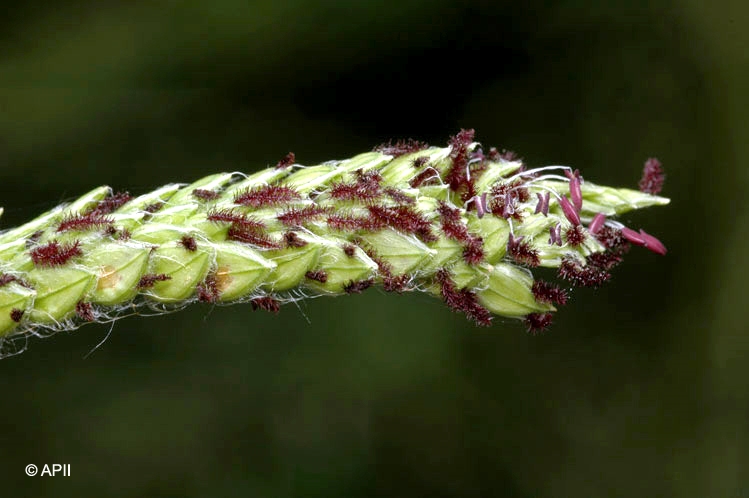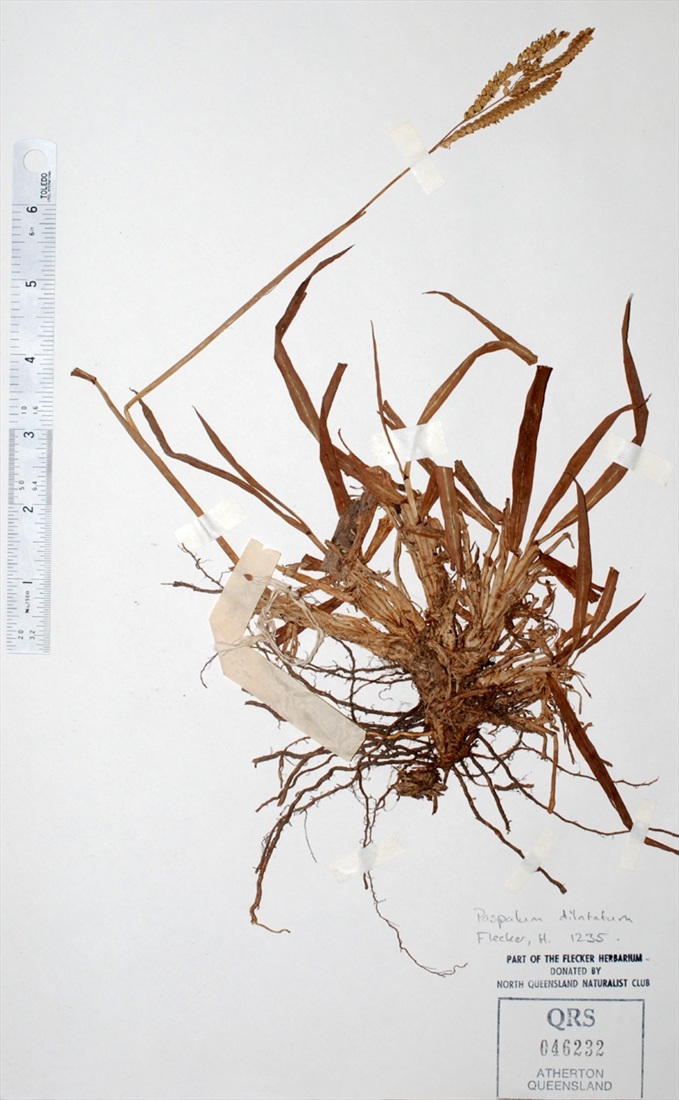Australian Tropical Rainforest Plants - Online edition
Paspalum dilatatum Poir.



Poiret, J.L.M. in Lamarck, J.B.A.P. de Monnet de & Poiret, J.L.M. (1804) Encyclopedie Methodique, Botanique 5: 35.
Paspalum
Perennial from a short creeping rhizome, leafy at base. Culms forming a coarse, spreading tuft, 50-150 cm tall, and with glabrous culms.
Leaf sheaths glabrous or pilose in the lower part, striated; leaf blades 10-45 × 0.3-1.2 cm, glabrous; ligule a membrane 1-4 mm long with a few long hairs on the shoulders.
Inflorescence axis 2-20 cm long; racemes (2-) 4 (-10), secund, 5-12 cm long, spaced, diverging, with 4-5 mm long silky hairs in the axils; spikelets paired; rachis 1-1.5 mm wide, glabrous, prominently winged. Spikelets green or purplish, broadly ovate, 3-4 mm, sharply acute; upper glume membranous, 3-veined, sparsely pubescent to almost glabrous on back, margins fringed with long white hairs; lower glume absent; lower lemma similar but not hairy; upper lemma pallid at maturity, orbicular, ca. 2 mm, clearly shorter than spikelet, papillose-striate, apex rounded.
Features not available.
An introduced species in WA, NT, NEQ, CEQ and southwards to southern Australia. Altitudinal range from 20-1050 m. Grows in disturbed places especially along roads and tracks in rainforest, sclerophyll forest, Eucalypt forest, Eucalypt woodland and grassland. Also from Europe, Africa, Temperate Asia, Tropical Asia, New Guinea, Pacific Islands, North America and South America.
Foodplant for the instar larvae of theWhite Grassdart butterfly (Common & Waterhouse 1948).
A weed of agriculture and of lawns.





